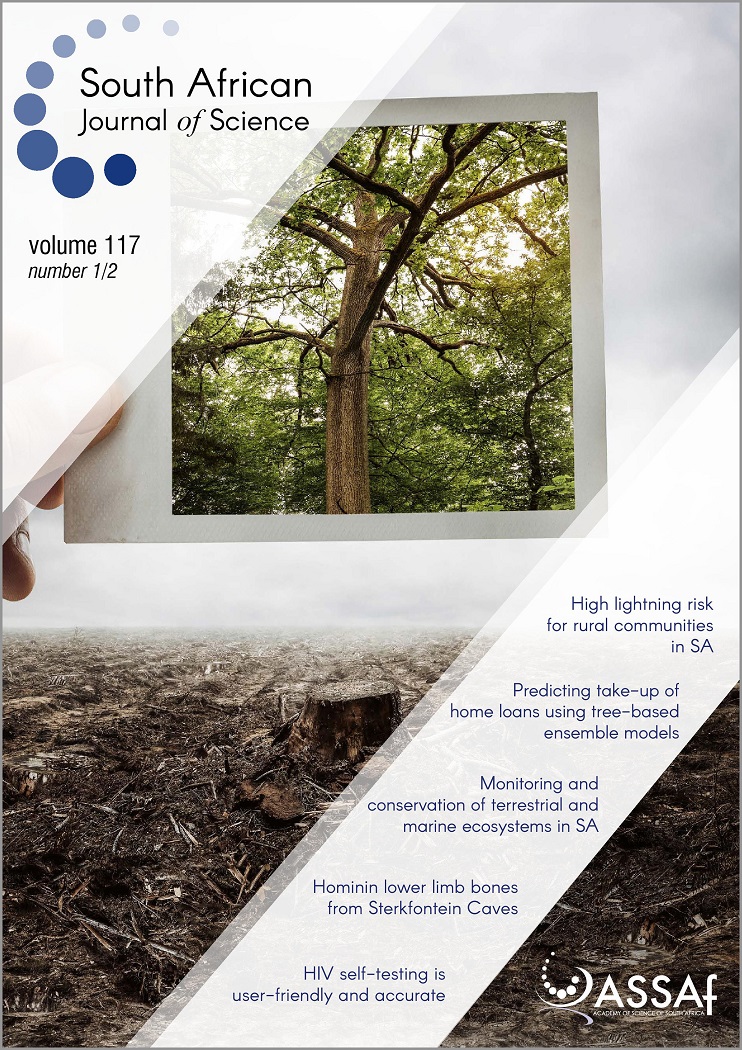Identified main fire hotspots and seasons in Côte d’Ivoire (West Africa) using MODIS fire data
DOI:
https://doi.org/10.17159/sajs.2021/7659Keywords:
active fires, fire density, fire hotspot, fire season, remote sensingAbstract
Biomass burning has become more frequent and widespread worldwide, with a significant proportion occurring in tropical Africa. Fire dynamics have been generally studied at global or regional scales. At local scale, however, fire impacts can be severe or catastrophic, suggesting local analyses are warranted. This study aimed to characterise the spatio-temporal variations of vegetation fires and identify the main fire hotspots in Côte d’Ivoire, a country of West Africa, one of the world’s burn centres. Using MODIS-derived fire data over a 10-year period (2007–2016), the number of fire days, active fires and fire density were assessed across the entire country. In the southern part dominated by forests, fire activity was low. Three main fire hotspots were identified between 2°30’–8°30’W and 7°00’–10°30’N in the North-West, North-East and Central areas all dominated by savannas. In these areas, Bafing, Bounkani and Hambol regions recorded the highest fire activity where fire density was 0.4±0.02, 0.28±0.02 and 0.18±0.01 fires/km²/year, respectively. At national scale, the annual fire period stretched from October to April with 91% of fires occurring between December and February, with a peak in January. Over the decade, there was a decreasing trend of fire activity. Fire density also was negatively correlated with rainfall >1000 mm for the synchronic analysis, whereas fire density was positively correlated with rainfall in the previous years. Results suggest that the positive relationship between the previous year’s rainfall and fire activity could operate on a cycle from 1 to 4 years.
Significance:
- Three fire hotspots were found primarily in savanna vegetation, which burns more regularly than forestdominated vegetation.
- The fire season occurs over 7 months, the majority of active fires (91%) occurring in just 3 months (December-January-February) with a peak in January (39%).
- Fire activity has declined over the past decade with a return time of above-average fires from 1 to 4 years.
- Fire density is positively correlated to the amount of rainfall in preceding years, whereas fire density and rainfall of the same year were negatively correlated in the region of rainfall >1000 mm.
Published
Issue
Section
License

All articles are published under a Creative Commons Attribution 4.0 International Licence
Copyright is retained by the authors. Readers are welcome to reproduce, share and adapt the content without permission provided the source is attributed.
Disclaimer: The publisher and editors accept no responsibility for statements made by the authors
How to Cite
- Abstract 726
- PDF 652
- EPUB 167
- XML 226
Funding data
-
Campus France
Grant numbers mopga-short-0000000184












.png)